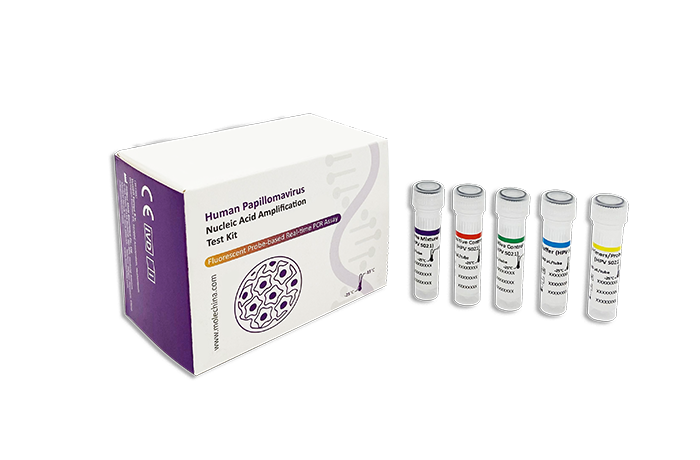
Why do we test HPV?
Cervical cancer is a leading cause of mortality among women. In 2020, an estimated 604 000 women were diagnosed with cervical cancer worldwide and about 342 000 women died from the disease. In the new WHO guideline for screening and treatment of cervical pre-cancer lesions for cervical cancer prevention, WHO suggests among the general population of women at the age of 30 years screening HPV every 5 to 10 years.
WHO suggests using an HPV DNA primary screening test either with triage or without triage to prevent cervical cancer among the general population of women.
The shelf life of this kit is 12 months when stored at – (20±5) oC. It is suggested to transport the kits in a sealed foam box with ice packs. Never leave the kit for more than 7 days at 2-8 oC under light avoidance.
Coincidence of references
By using the China national reference for L1 genotyping of Human Papillomavirus genome to evaluate this kit, the results were consistent with both positive references and negative references. For enterprise references, the coincidence rates of 20 negative references and 18 positive references are both 100%.
Precision
The coefficient of variation of Ct values of precision references is not higher than 5% within-batch and inter-batch.
Interfering substances
10% white blood cells, 5% lubricant, 2% antibacterial lotion, 2mg/mL-1 hemoglobin, 0.1mg/mL-1 of mucin, 10 mg/mL-1 benzene ether embolism or 4mg/mL-1 nitric acid contained in the sample had no significant influence on the performance of the kit. However, still try to avoid any interference substances in the process of sampling.
Cost Optimization: Flexible combination scheme to maximize testing efficiency and save cost.
Fast Detection:Using multiplex fluorescent PCR technology, the whole process only takes 90 minutes.
Complete Solution: We provide the complete HPV solution, from specimen collection to PCR detection.
Patient Management: A variety of detection solutions for different groups of people, which is beneficial to risk stratification and patient management.